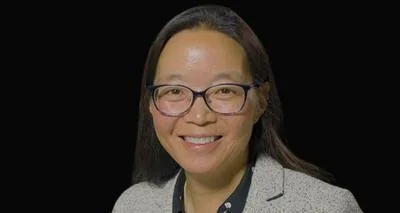Jennifer Mnookin Chancellor | Official website
Jennifer Mnookin Chancellor | Official website
People with Parkinson’s disease are receiving a new treatment in a clinical trial started after University of Wisconsin–Madison scientists demonstrated the safety and feasibility of the therapeutic delivery method in a study of non-human primates.
Parkinson’s disease damages neurons in the brain that produce dopamine, a brain chemical that transmits signals between nerve cells. The disrupted signals make it progressively harder to coordinate even simple movements and cause rigidity, slowness, and tremors that are the disease’s hallmark symptoms. Patients are typically treated with drugs like L-DOPA to increase dopamine production. Although the drugs help many patients, they present complications and lose their effectiveness over time.
Researchers at the Wisconsin National Primate Research Center successfully grafted brain cells called dopaminergic neuronal progenitor cells into the brains of cynomolgus macaque monkeys. California-based Aspen Neuroscience provided the cells, grown from multiple lines of human induced pluripotent stem cells, along with key pieces of equipment for delivering them to specific parts of the brain.
“By the time of diagnosis, it is common for people with Parkinson’s to have lost the majority of dopaminergic neurons, leading to progressive loss of motor and neurological function,” explains Edward Wirth III, an expert in cell therapies, study co-author and Aspen’s chief medical officer. “To replace these lost cells, we must target a very specific area of the brain with a high degree of surgical precision. Utilizing the latest advances in intraoperative MRI guided techniques, the patient’s new cells are transplanted, a few microliters at a time, to the exact area where they are most needed.”
Working with potential cell therapies in pursuing treatments for Parkinson’s disease is a particular specialty of Marina Emborg's lab team and their primate center colleagues.
“Using autologous cells, a patient’s own cells avoids the need to use immunosuppression to keep the patient’s body from rejecting or attacking the graft,” says Emborg, a UW–Madison professor of medical physics. “Aspen has developed technological methods for manufacturing and quality control that makes it feasible at scale to make autologous cells and get them to patients.”
The researchers’ results in non-human primates supported Aspen’s successful Investigational New Drug application to begin human trials. These results were published today in the Journal of Neurosurgery.
“This study was an important step in our work to bring the promise of cell-replacement therapy to people with Parkinson’s disease,” says Andrés Bratt-Leal, study co-author, Aspen Neuroscience co-founder and senior vice-president of research and development. “The results were instrumental in opening our first-in-human trial and informing how we deliver patients’ own cells to them in this study.”
The UW–Madison scientists led by Parkinson’s researcher Emborg took up Aspen-funded work following their success (published in 2021) reversing Parkinson’s symptoms in monkeys by grafting neurons grown from monkeys’ own cells through autologous transplant.
The 2021 study used cells grown by stem cell researcher Su-Chun Zhang of UW–Madison School of Medicine and Public Health. New dopamine-producing neurons were added through injections guided by MRI into an area called putamen. Dopamine production increased dramatically as did motor skills; symptoms such as depression and anxiety also reduced.
The new study tested delivery using Aspen's human cells. Wirth worked with Emborg's team bridging monkey-to-human application differences; unlike previous top-of-skull administration methods used earlier on putamen regions — now via back-of-skull angles reducing insertions required for apparatus deliveries during surgery procedures improving logistics reducing risks overall including infection rates/trauma & anesthesia durations minimized ultimately aiding recovery phases significantly according studies done earlier promising outcomes indicated overall thus betterment expected moving forward effectively...
Six monkeys received grafts across both hemispheres — higher dose one side lower other comparing controls showed persisting five animals yielding evidence affirming similar trials/confirmations verifying procedural efficacy going forward…
“It was true collaboration” notes Emborg emphasizing integrated team efforts validating company methodologies before Banner – University Medical Center Tucson neurosurgeon Paul Larson initiated human trials earlier spring season exemplifying research translational impacts potentially revolutionary towards alleviating debilitating conditions affecting millions globally annually according expectations anticipated likely within foreseeable future timelines realistically achieving desired outcomes efficiently ensuring beneficial implications therein substantively…
Research funded primarily through Aspen Neuroscience/National Institutes Health support mechanisms validating claims/tests verifiably conclusively per extensive documentation recorded corroboratively...





 Alerts Sign-up
Alerts Sign-up